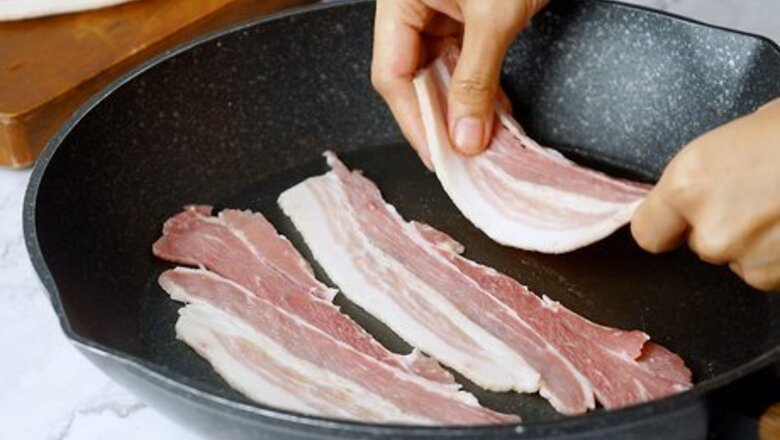
views
Frying the Bacon
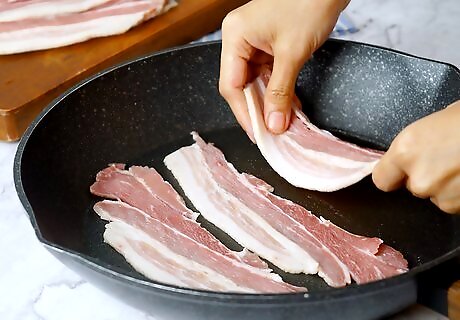
Place the bacon on a cold skillet or frying pan. You can use a 12 in (30 cm) cast-iron skillet or frying pan, so long as it is cold. Place several slices of bacon on the skillet or pan. The bacon slices should be almost touching, but not overlapping. If you overlap the bacon, it may not cook evenly. A regular frying pan will work just as well as a cast iron-skillet will, but a cast-iron skillet will cook the bacon faster.
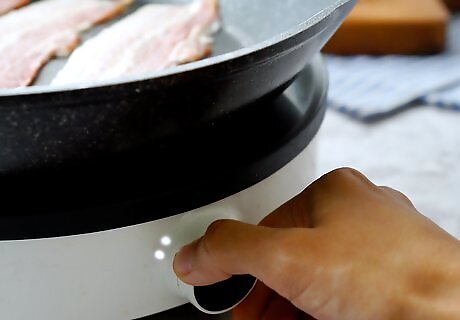
Turn the stove on and start frying the bacon. Set the temperature to "low," and let the bacon start cooking. As the bacon begins to heat up, you will notice bacon fat pooling in the bottom of the pan. This helps cook the bacon evenly. If there is too much bacon fat, then you can consider pouring some out into a heat-safe bowl or jar. Do not pour bacon fat down the drain, or you may risk clogging the drain. If you want crispy bacon, consider filling the skillet or frying pan with just enough water to cover the bacon. Set the temperature to "high" instead of "low." When the water begins to boil, lower the heat to "medium," and when the water has simmered away, lower the heat again to "medium low." Continue cooking the bacon in its fat until it is golden-brown in color.
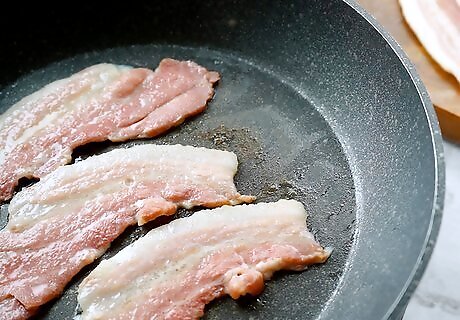
When bacon beings to curl, flip it with a fork. After a few minutes, you will notice that the bacon is starting to bubble and curl. Flip the bacon using a fork. You can either use the fork as a mini spatula and slide it beneath the bacon slice before flipping it over. You can also wedge the bacon slice between the fork prongs and flip it over that way; this gives you more support and control.

Continue cooking the bacon until it is done. The amount of time you cook your bacon depends on how well-done you like your bacon. The crispier you like your bacon, the longer you will have to cook it.
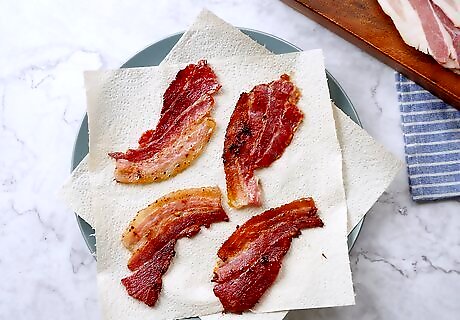
Remove the bacon from the skillet or pan and drain the fat. Once the bacon has cooked to your liking, transfer each piece to a paper towel-covered plate. Allow the paper towel to soak up any excess fat before serving the bacon. You can also drain the bacon on sheets of newspaper, cut up paper bags, or a wire baking rack placed over a cookie sheet.
Adding Flavor to the Bacon
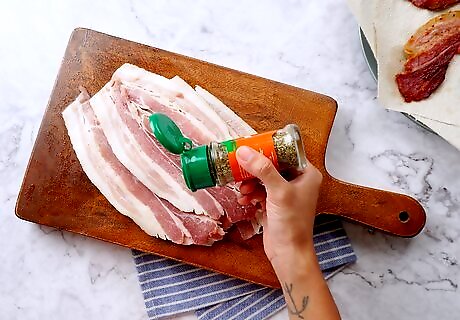
Consider adding some variation to your bacon. You can make your bacon more flavorful by marinating it or rubbing spices onto it before frying it. You can also combine it with other food items. This section will give you some ideas on how to add extra flavor to your bacon. To learn how to fry bacon, refer to the section in this article on frying bacon.
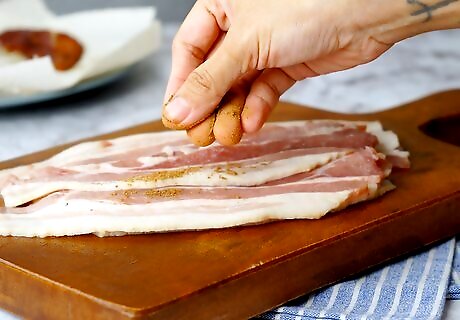
Add some spices to the bacon. You can give your bacon an extra burst of flavor by rubbing a combination of spices onto it. Make sure that the bacon is room temperature before adding the spices. Let the spices sit on the bacon for a few minutes before frying it. Here are some combinations: 1 tablespoon brown sugar, 1 teaspoon cinnamon, and 1 teaspoon apple or pumpkin pie spice. 1 teaspoon brown sugar, ¼ teaspoon of cracked pepper. 1 tablespoon of granulated garlic and 1 tablespoon of paprika. 1 ½ tablespoons of dark brown sugar.

Marinate the bacon with sauce, salad dressing, or syrup. Put some bacon in a dish and cover it with a sauce, salad dressing, or syrup of your choosing. Make sure that both sides of the bacon are coated. Let the bowl sit in the fridge for 30 minutes, then fry as usual. Consider marinating the bacon with any of the following: 1 cup pineapple juice plus 1 teaspoon soy sauce Italian salad dressing Molasses Teriyaki sauce Maple syrup. Thinner, Vermont-style maple syrup works best. Note that sweet sauces and dressings will caramelize when you fry the bacon. This will result in some stickiness and messiness.
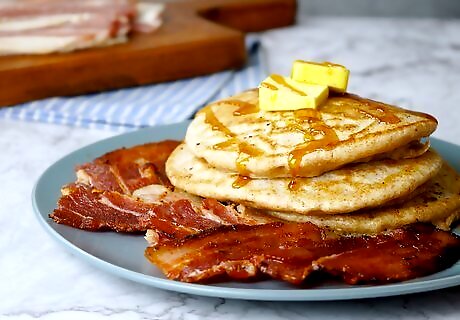
Make some bacon pancakes. While not quite seasoning or marinating, it is possible to combine the two best breakfast foods: bacon and pancakes. Prepare some pancake batter and fry some bacon. Take the bacon out of the skillet or frying pan, set it on some paper towels, and pour out the grease. Place the bacon back onto the skillet or pan, leaving 2 inches (5.1 cm) of space between each slice. Pour the batter along each slice of bacon and let it cook until the batter starts to turn bubbly (about 1 to 2 minutes). Flip the bacon pancake over, and let it cook until the bottom turns golden (about 2 minutes).
Using Alternatives to Frying
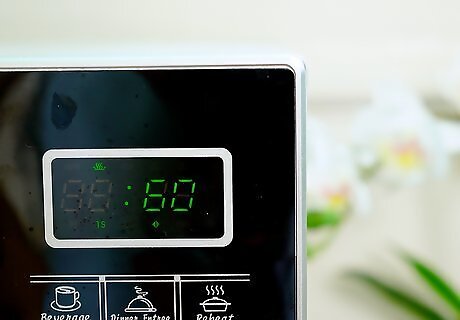
Consider other cooking methods. While bacon is traditionally fried, sometimes frying just isn't an option either due to time constraints or lack of equipment. Fortunately, there are different methods of cooking bacon. This section will show you how to cook bacon using a microwave, an oven, and a grill.
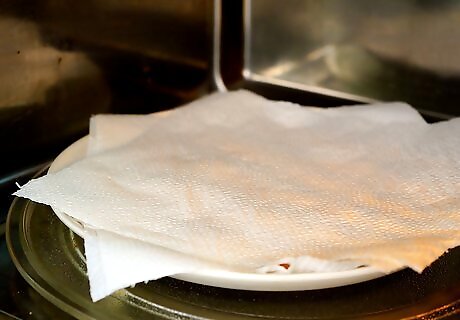
Cook the bacon in a microwave. Place a few strips of bacon on a paper towel-covered plate, then cover the bacon with another sheet of paper towel. Place the plate in the microwave and cook it for 1 minute. Be sure to watch your bacon, as every microwave is different and your bacon may be finished sooner. The more paper towers you cover the plate with, the more fat the paper will soak up. This will give you crispier bacon.
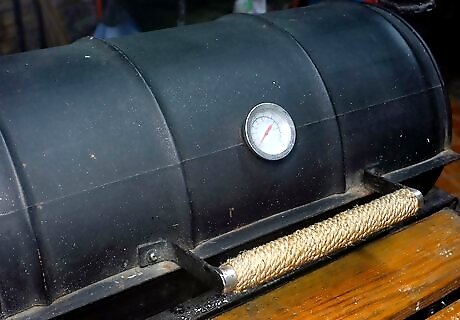
Cook the bacon over a grill. Start up your grill and set it to medium heat. When the grill is hot, arrange the bacon on the rack. Wait until the bacon starts to turn crispy and golden, then flip it over and let it cook some more. This will take 5 to 7 minutes.
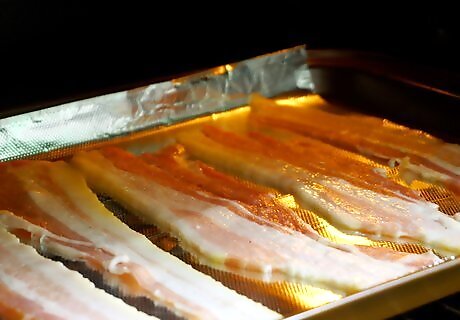
Bake bacon in the oven. Cover a baking sheet with foil and place a wire rack over it. Arrange the bacon on the wire rack and place everything into a cold oven. Turn the oven on and set the temperature to 400°F (205°C). Let the bacon cook for about 20 minutes. For crisper bacon, increase the baking time by a few more minutes. Consider flipping your bacon. Bake the bacon for 12 to 15 minutes, then flip it over. Let it cook for 10 more minutes. Placing the bacon on a wire rack will allow the excess fat to drip down and not puddle around the bacon. It will allow the hot air in the oven to circulate around the bacon and cook it evenly. Placing the bacon in a cold, oven, without preheating it first, gives you flatter bacon and prevents shrinking.

















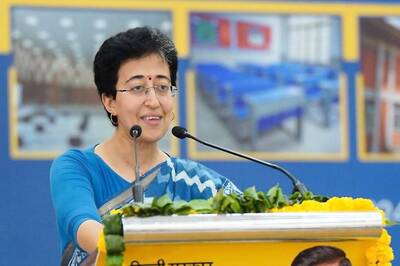

Comments
0 comment